
The tools are safely removed, the geese are on patrol and the outer face of the wall is emerging from the undergrowth.
As we now had a moratorium on island based works for a month or so we we had to transfer our attentions to the outfall channel on the north-east corner of the Lake. Further efforts were made to to clear and clean the stone work of the feature we had labeled the sluice and Peter then took charge of the stone by stone elevation drawing and planning at a scale of 1 to 10. Simultaneously we opened up the first of our test pits in the area. These metre square mini-trenches are designed to evaluate archaeological potential and facilitate planning when larger scale excavations are contemplated, Interestingly, significantly even, our hole, roughly 8 metres north of the sluice, produced... well nothing really. I'm sure you can all see how important this finding is. I am of course refraining from further comment until I've worked out exactly what it means.
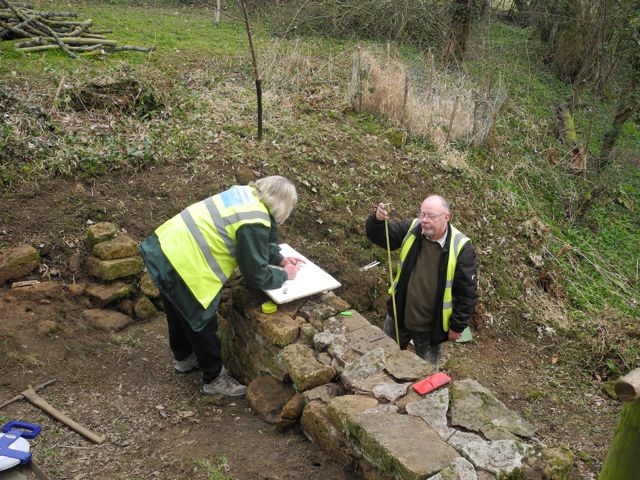
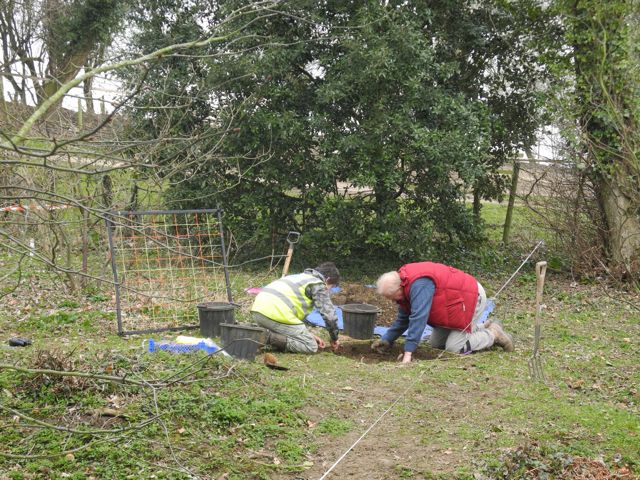
Drawing the sluice Starting Test Pit 1
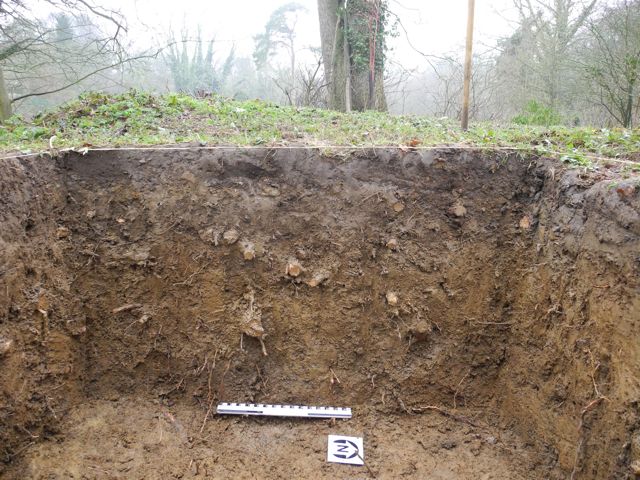
And here's what it looked like: topsoil. sub-soil and the soil below the sub-soil...
and here it is drawn up, exciting eh?
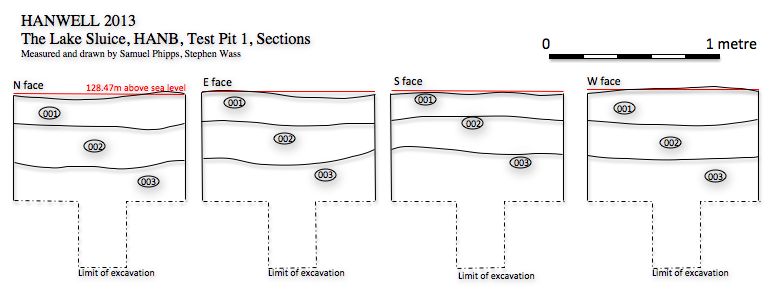
One
particular treat was the chance on Saturday April 6th. to join Chris M.
our expedition photographer, on a trip up the narrow gorge that marks
the eastern limit of Mesopotamia. The course of the stream has already
been mapped but I had noticed a large collection of twentieth-century
bottles and jars distributed along its length and it occurred to me
that
a comparatively easy way to record all of them would be to photograph
the stream bed with a series of overlapping images that could then be
stitched together to create a composite view of its entire length. I'm
still working on this! A much easier option, at least for me, was to
watch Chris setting up his camera with a sophisticated range of add-ons
to his tripod which enabled him to take panoramic views without the
spherical distortion that was evident in our last attempt.
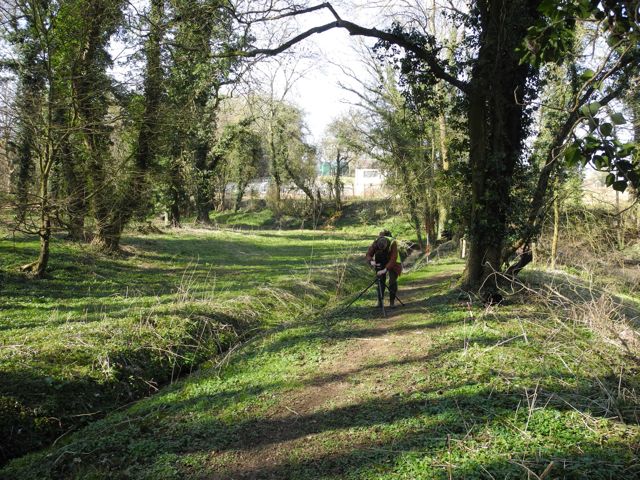
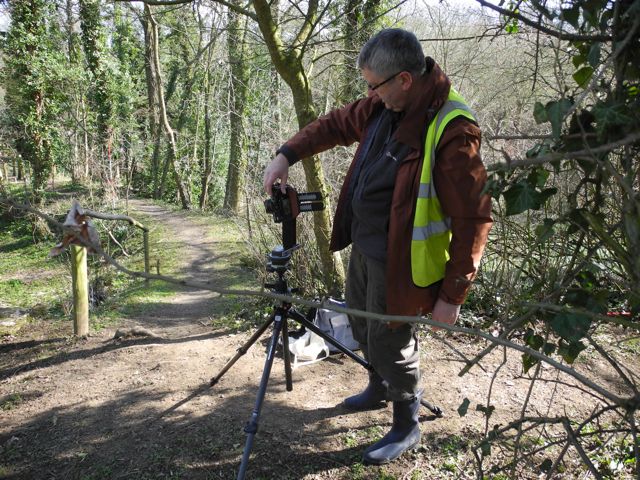
Chris does interesting things with a tripod.
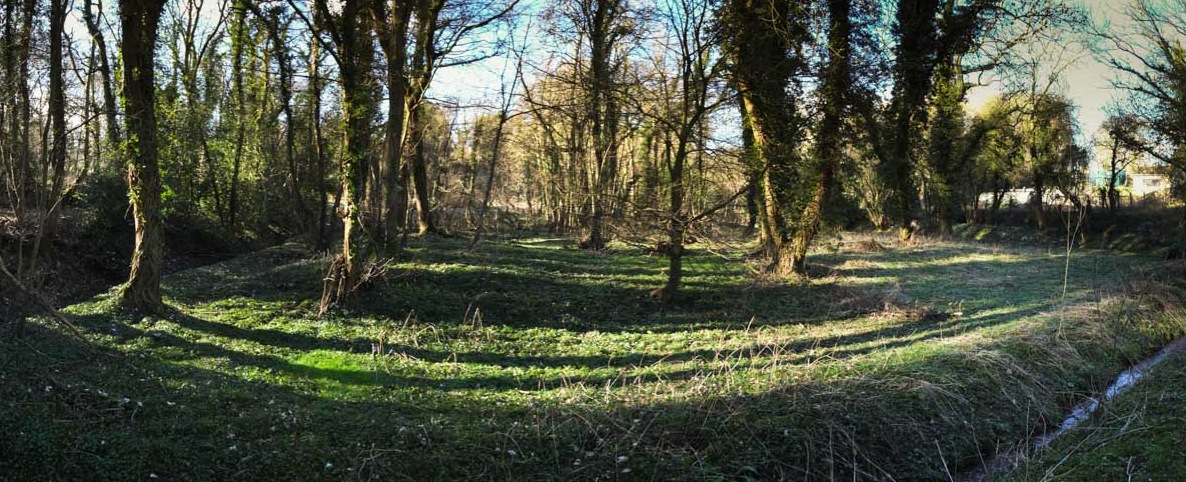
Panorama of the Second Fishpond looking west from last February, taking advantage of the camera's in-built stitching facility (CM)
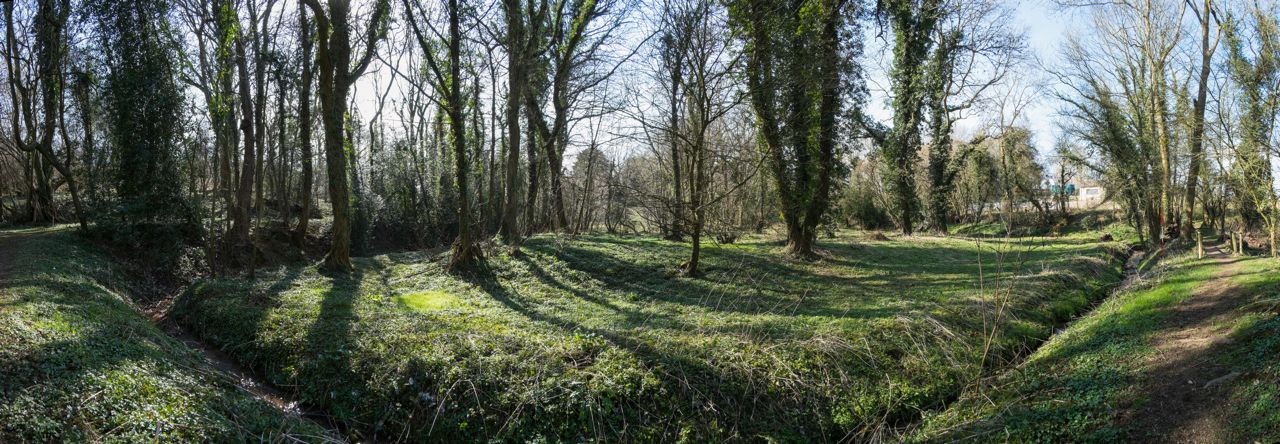
From April, view from south through west to north, much less distortion on any individual vertical segment but the picture is still a little misleading as it 'folds' the image in from the sides towards the middle.
This looks like a corner but is, in fact, a view along a straight side (CM).
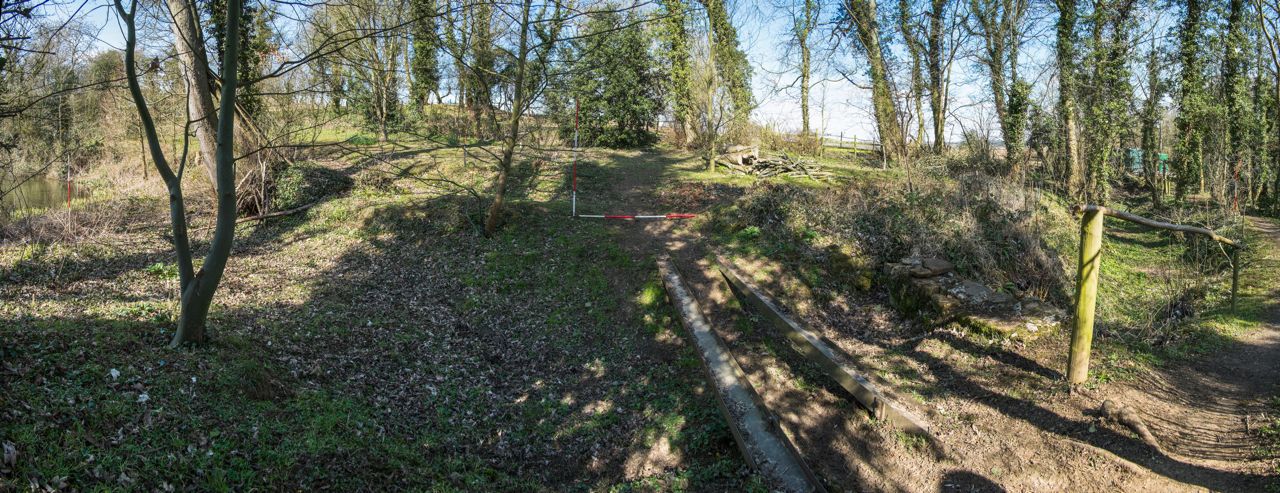
The channels and sluice on the north-east corner of the Lake, view looking from west through north to east (CM).

Mesopotamia, view looking from west through north to east (CM).


Chris does interesting things with a tripod.

Panorama of the Second Fishpond looking west from last February, taking advantage of the camera's in-built stitching facility (CM)

From April, view from south through west to north, much less distortion on any individual vertical segment but the picture is still a little misleading as it 'folds' the image in from the sides towards the middle.
This looks like a corner but is, in fact, a view along a straight side (CM).

The channels and sluice on the north-east corner of the Lake, view looking from west through north to east (CM).

Mesopotamia, view looking from west through north to east (CM).

Wednesday April 17th. Steps are emerging to the left whilst Peter and Mike are near to completing the stone by stone elevation drawing of the walling
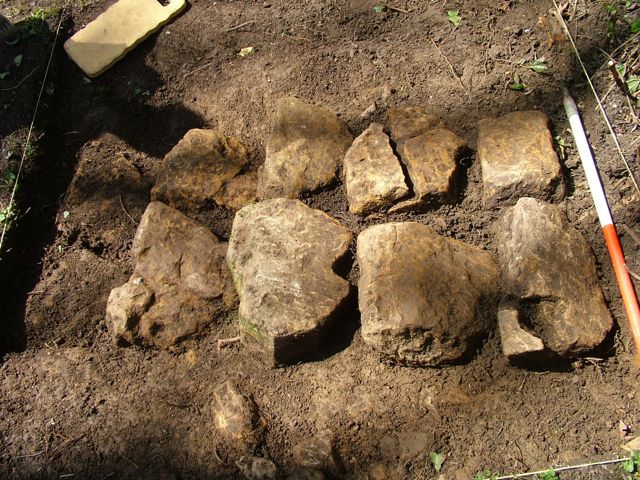
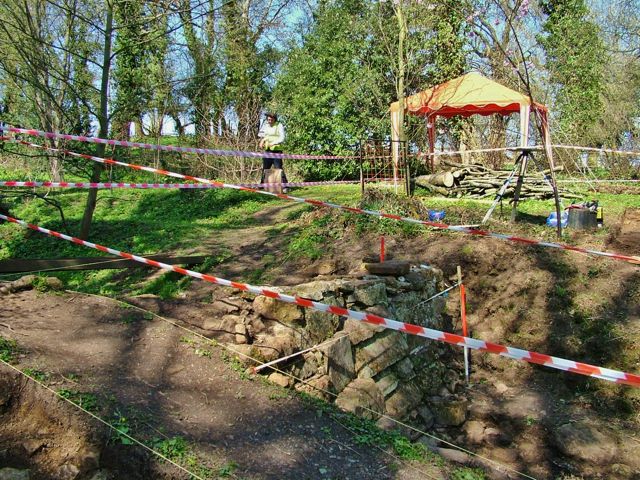
Here are the steps at a later stage, they contain architectural fragments so one assumes they are eighteenth century or later and as the sun shines the gazebo goes up (Photos by Peter Spackman).
Thanks to David Freke and Liz Newman I was also introduced to the extraordinary collection of scratch dials on the south wall of the church. A Saturday morning visit from committee members of the Oxfordshire Gardens Trust was a high point with plenty of informed queries and comments and not a bad lunch in the Moon and Sixpence afterwards.
Thanks to some of the Cropredy volunteers the last full week of the month saw us finishing off the survey of the earthworks on what I am now calling 'The Great East Terrace'.... well why not? It was good to get this done as you could practically see the nettles growing. We also went back to take another look at the masonry feature christened 'The Temple of Flora', probably a half-hexagonal projecting 'bastion' on the terrace. It seemed to be looking a little less stable than last time I saw it so Peter and Mike did an excellent job of very, very, very carefully clearing the area around so we could take some photos for the record just in case it decides to collapse.
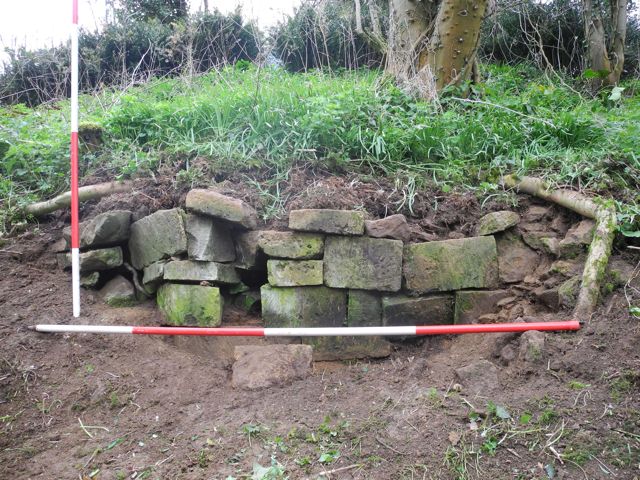
The temple of Flora, view from the east
Back at the lake side dig things went from strength to strength, now
the gazebo is installed we have all the comforts of home, well almost,
and we have pretty well shifted the remaining turf and topsoil from the
whole area. This was extended to examine possible building remains to
the north of the channel, more on this to come. Something else we're
looking forward to is sifting through a spread of twentieth-century
debris that Susan uncovered on the west slope of the channel.
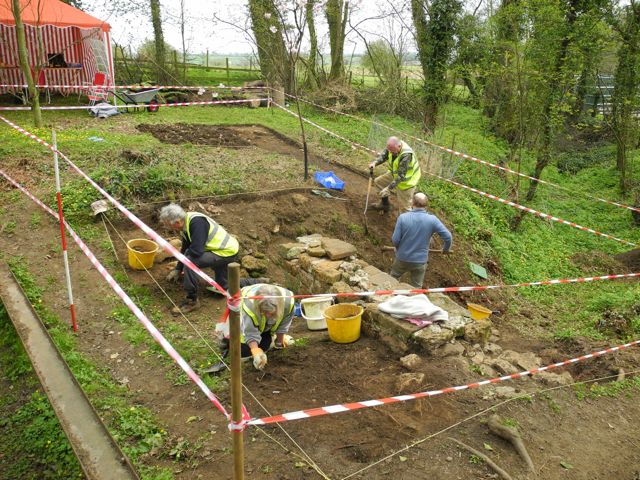
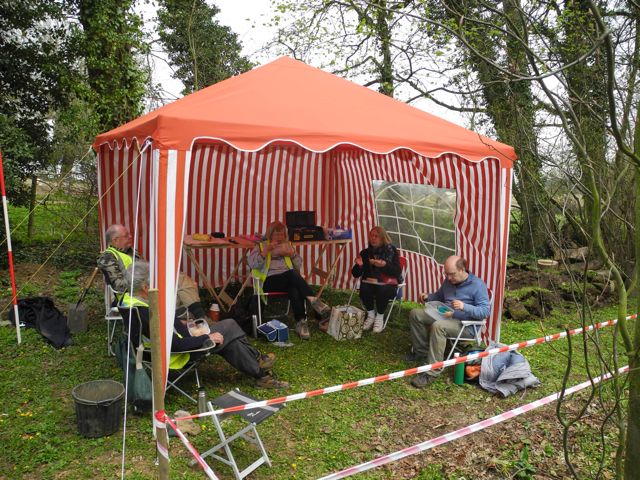
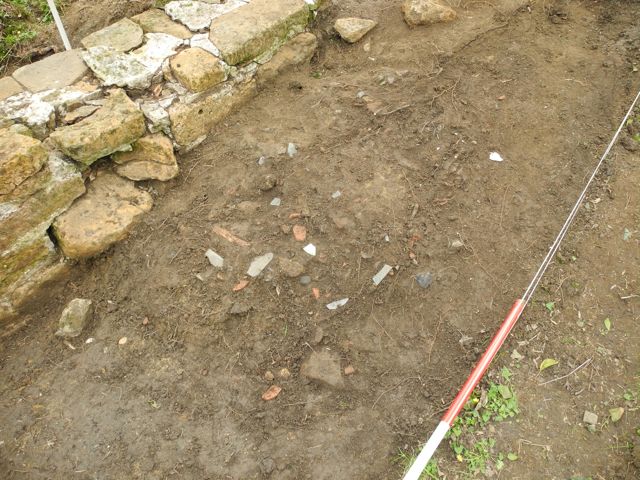
The last of the topsoil vanishes. Lunch under cover. Susan's rubbish.
We
also managed to squeeze in just before the end of the month the first
of what will become a huge collection of profiles of the various banks,
channels and terraces that litter the site. Thanks to Geoff and
Chris for these.
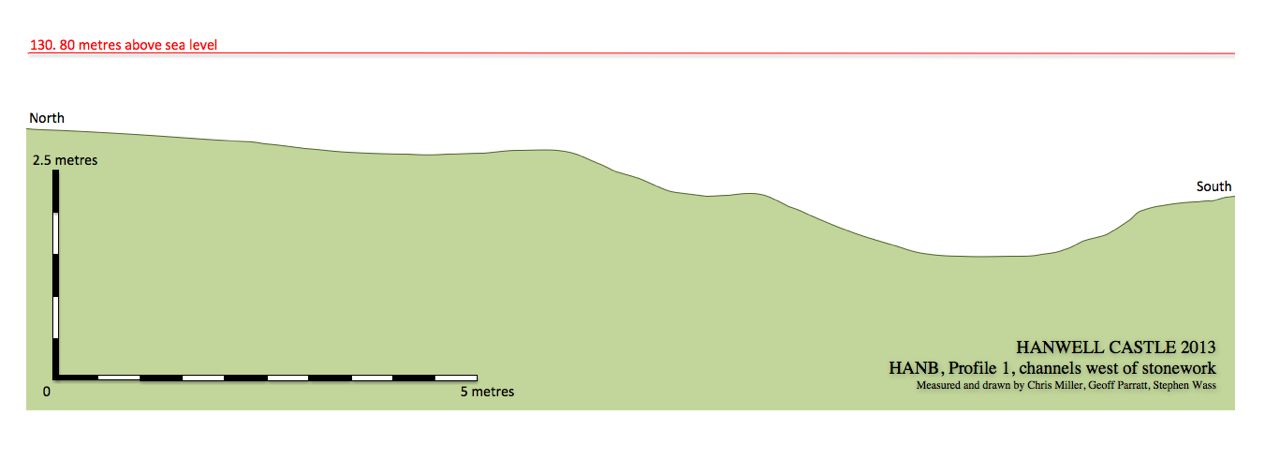
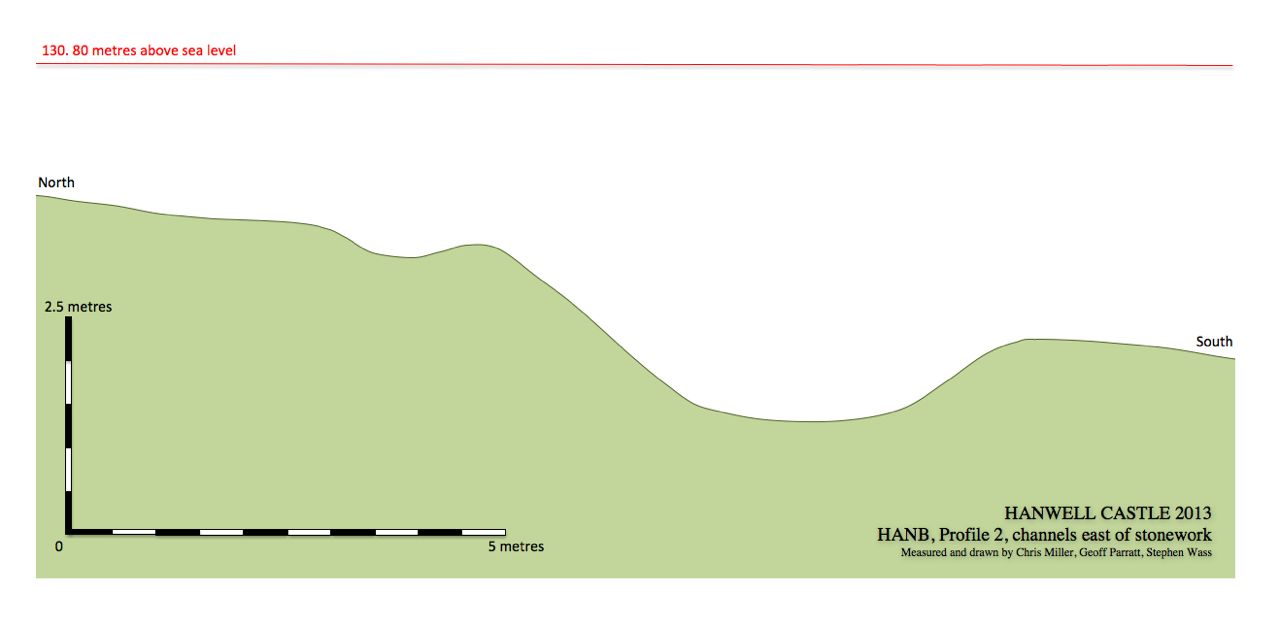



The last of the topsoil vanishes. Lunch under cover. Susan's rubbish.
And
just to prove that we are not totally focused on dirt here are a
selection of photos of the current crop of spring flowers which have
erupted around us...

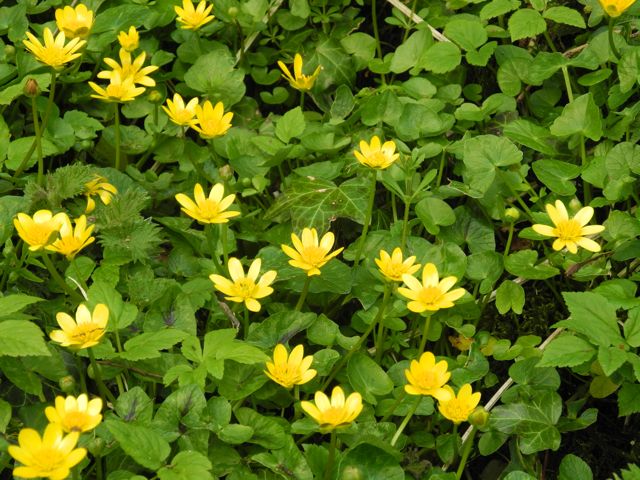
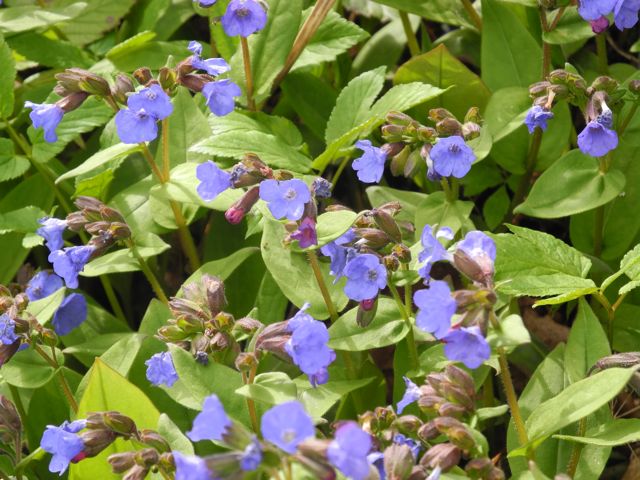





Find of the Month |
| Up to now finds from the early modern period or before have been worryingly thin on the ground.
I've seen more seventeenth-century slipware digging in my back garden.
Now during the rush to survey the terracing east of the castle we
really cracked on, it had turned quite warm during the second day and
when Geoff, one of our volunteers, sat on the bank above the path for a
breather he sat on this! That's one way to make a find but perhaps not
to be recommended in all cases. It's a fairly hefty (88g) chunk of
pottery from a large vessel, diameter around 20 cm. and
finished on the inside only with a thick speckled and streaked
mid-brown manganese glaze. One would describe it, because of its
rather irregular form, as hand built although there is evidence of some turning. The sides bulge out slightly towards the base which had a raised centre. This
all suggests something like a tall jug or vase like form which could
happily fit into the sixteenth or seventeenth century but as it was
unstratified it doesn't make much difference, oh well. |
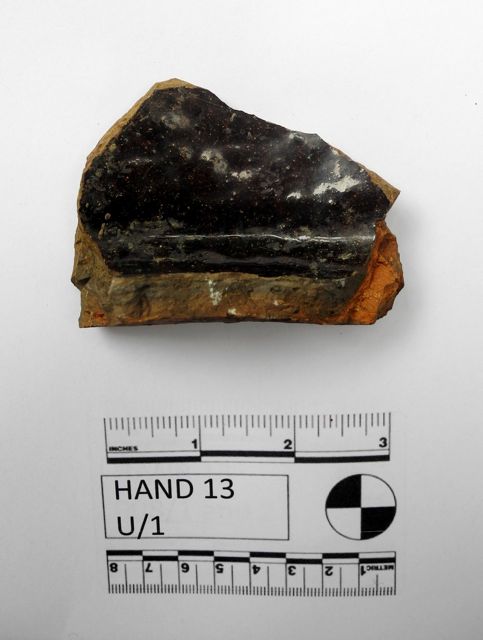 |